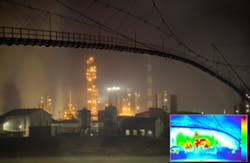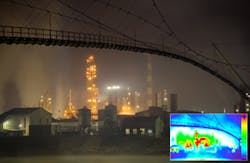How to Choose a Non-Contact Infrared Temperature Sensor
March 21, 2013
2 min read
The human eye is unable to detect infrared radiation (IR); however an IR detector converts the infrared energy into an electrical signal that generates a temperature value. Infrared or non-contact temperature sensors are very successful in measuring hot, moving, or difficult-to-reach objects. They are also used where contact temperature sensors would damage or alter the material.
Infrared temperature sensors are used in a wide range of industrial applications, including heat treating, forging, glass processing, building and construction materials, packaging, thermoforming, machine condition monitoring, and food processing. Here are some basic questions to help choose the correct fixed-mount infrared temperature sensor, courtesy of Solutions Direct, a distributor of infrared thermometers for OEMs and industrial applications:
- What is the temperature range of the process to be measured, as well as temperature sensor accuracy required?
- What is the target material for the the temperature sensor measurement? Is it shiny or dull? Highly reflective or shiny materials tend to have a low emissivity (object’s ability to emit energy), while non-metallic or organic materials have a higher emissivity.
- What is the target size and distance from infrared temperature sensor? Optical resolution is specified by the D:S ratio, which is found by comparing the distance from the object to the sensor (D) with the size (i.e., diameter) of the spot being measured (S). For example, a 1-inch spot on a target being measured at a distance of 10 inches has a D:S of 10-to-1.
- Does the target completely fill the field of view (FOV) of the infrared temperature sensor device?
- What are the ambient/environmental conditions (i.e., ambient temperature, smoke, dust, or particulates) for the temperature sensore measurement?
- Are the parts moving (i.e., rollers, moving machinery, or conveyor belt)? If so, how fast? This influences response time requirements.
- What signal input does your temperature sensor controller accept (i.e., 4-20 mA, J or K thermocouple, or RS-485)?
About the Author
Sign up for our eNewsletters
Get the latest news and updates

